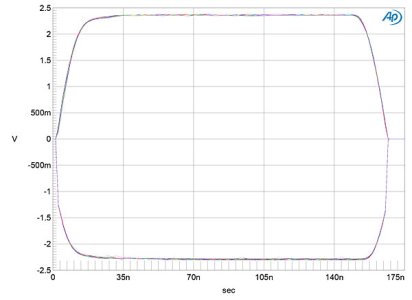It's going to be a long time process, but I will try to add a new content periodically. Everything based on the pre prod device which is PCB ver 2 unit.
Just one thing at the beginning, a comparison of the waveforms over the digital coax output, tested with the oscilloscope and 192 kHz sample rate test signal, and terminated at 75 ohms.
This is for the Ultra:
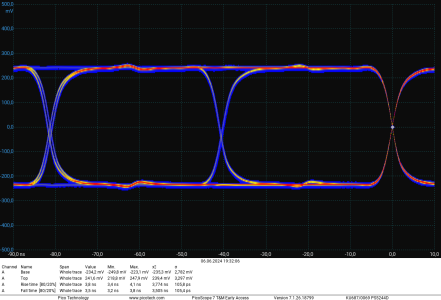
And this is for the Pro/Plus:
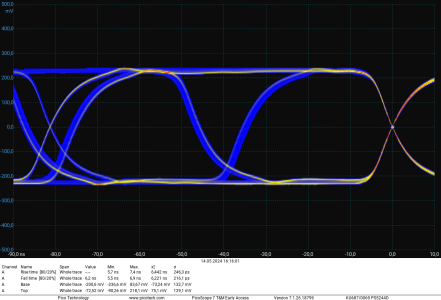
Ideal and perfect waveforms would show rectangles. In the real world it should be as close as possible to the ideal one. The Ultra is a clear winner here.
A rough comparison of the Pro Plus with the Ultra, THD vs frequency, 192 kHz sample rate. It's not a THD+N, so it's not a sinad. And this is over the analog output using full scale sine signals.

The "hills" here would require some explanation, but I'll spend some time on that a little later with my personal perspective on other measurements results which I've faced.
Few words on the noise on the analog output. I use 192 kHz sample rate and a dithered silence file to keep the output active.
First result is taken when the Ultra is connected directly to my ADC, screen is off:
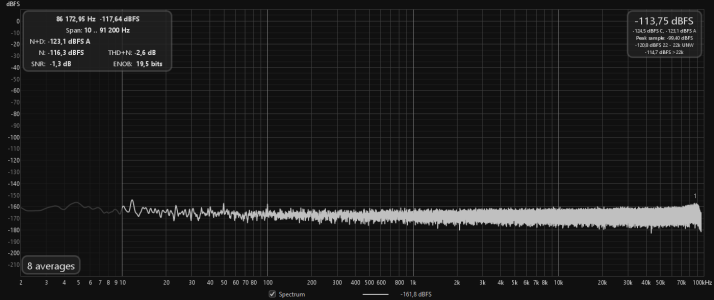
and with the screen on:
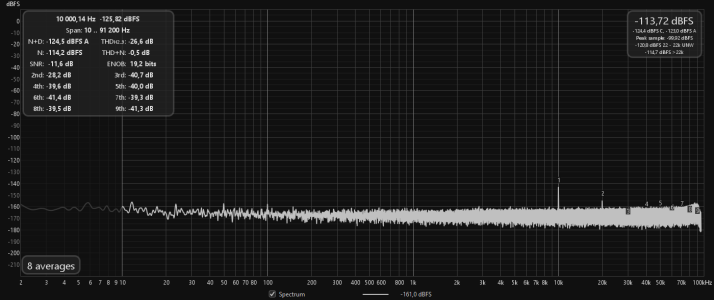
10 kHz component (and harmonics) appear.
Now the same test but also with the scaler, so that's the setup I use most of the time, screen off:
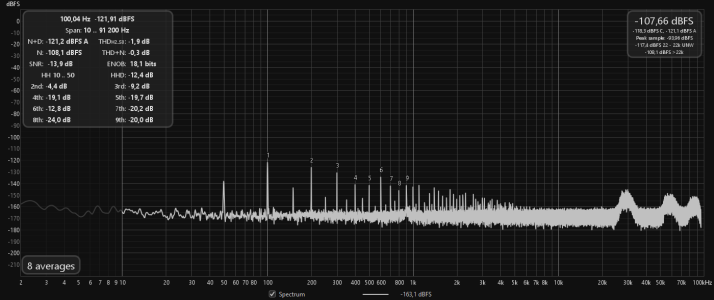
and the screen on:
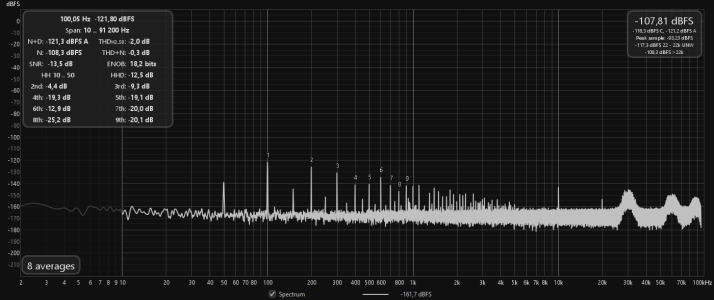
One of the differences between above setups is the input impedance, 1.2 kOhm vs 100 kOhm. I've made some additional tests with RME UCX II and 5 kOhm and 9 kOhm impedances, and observed results lied between these above, being closer to the ADC alone with its low input impedance. I guess that the noise pollution from the PSU is strong enough to reveal itself when high impedance input is used. And it can affect measurement results.
Personally I prefer to see something as below, the Pro Plus powered by an LPS and with the scaler, so high impedance input is used:
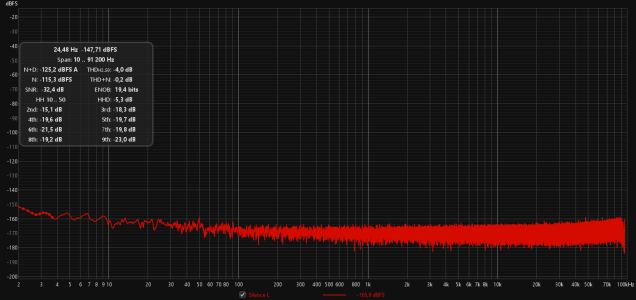
As I am still suspicious, I made another test with the LPF (which I use for class D amps measurements) attached. The scaler is used again:
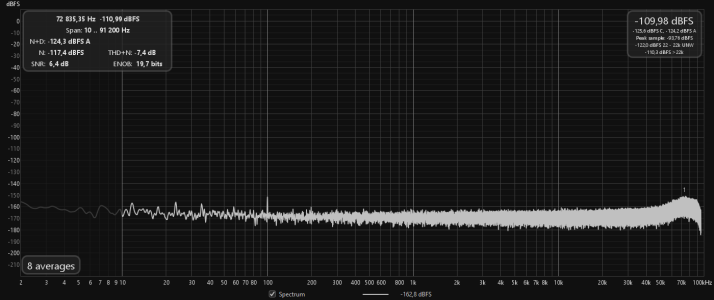
Noise pollution is highly attenuated, so maybe it comes from the high frequency noise made by the PSU. I looked at the spectrum of white noise to verify how the DAC filter (there are 7 of them BTW) handles is. Below a comparison with the Pro Plus:

It doesn't look good to me.
And something for those sinad addicted, with an LPF:
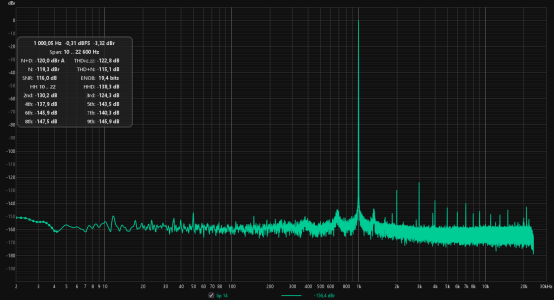
and without it:
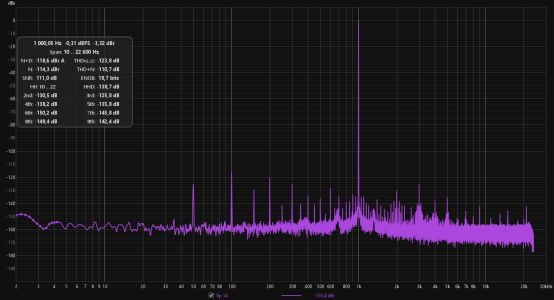
Noise level is 5 dB higher without the LPF so sinad is worse by 5 dB as well. Jitter artifacts are visible around the fundamental on both graphs.
For all the following tests I will use the LPF, unless stated otherwise.
The Dynamic Range, 120.1 dB.
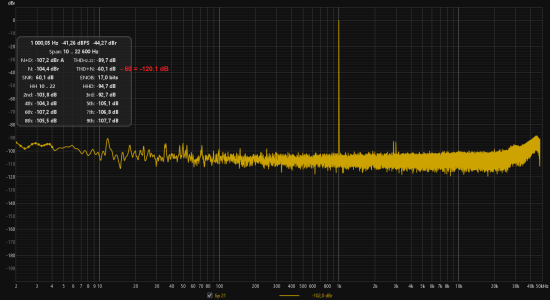
THD vs level, for 1 kHz test tone:
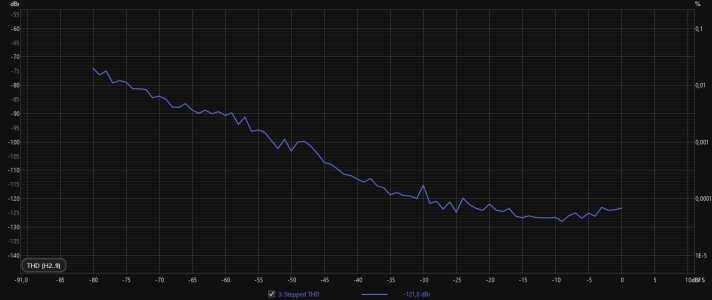
IMD vs level, for SMPTE test tone:
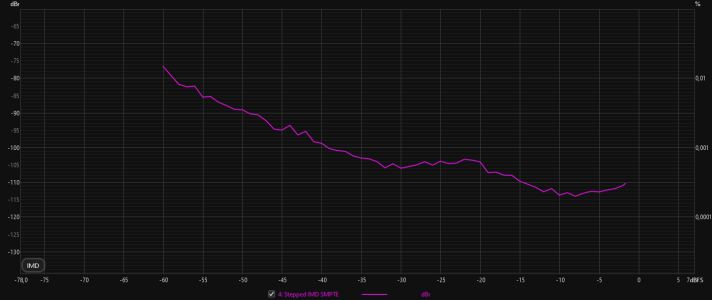
A small sign of ESS hump is visible. I said in the comments, based on quick tests, that it wasn't visible with the LPF, but I was wrong.
J-test for the analog output. I've no idea why some people take such results as jitter measurements of the digital outputs...
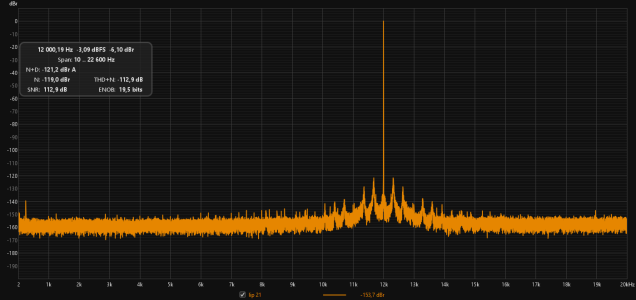
NID multitone:
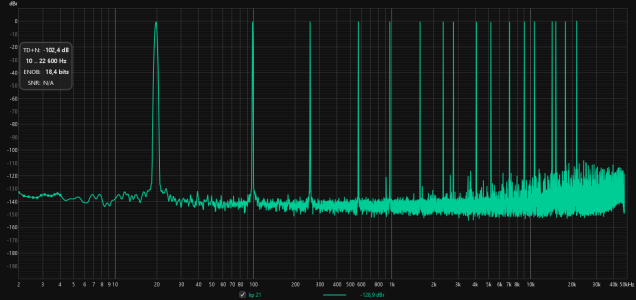
Time for something I would call a noise profile, over the coaxial output. I use both ADC Cosmos and the Scaler plus the LPF, with a termination at 75 ohm just before the LPF. Due to the LPF characteristics I limit the recording sample rate to 96 kHz. As a test signal I use dithered "silence" file.
First result comes from SMSL PO100 Pro, powered by the USB hub:
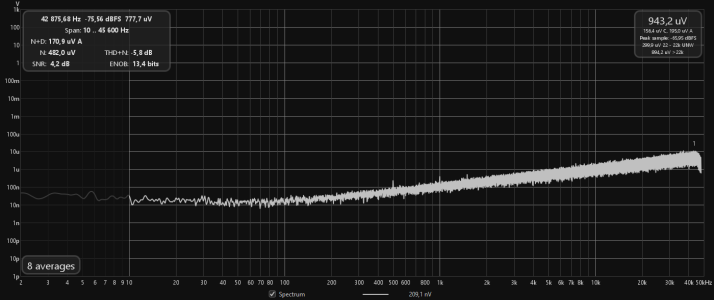
Next one is the WiiM Pro, powered by Sbooster LPS:

And the last one is the Ultra, powered by its internal SMPS:
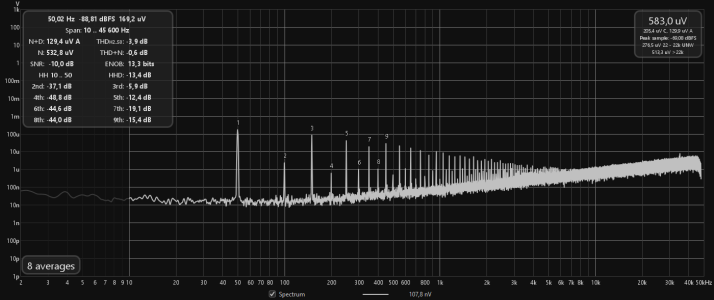
The Ultra is a clear winner with its 583 uVrms noise level, but PSU spikes reveal the strongest presence. Noise of the WiiM Pro - 2.288 mVrms - is much higher although the linear power supply is used.
Low-level -90.31 dB signals look worse then for the Pro Plus.
Undithered, 16 bit:
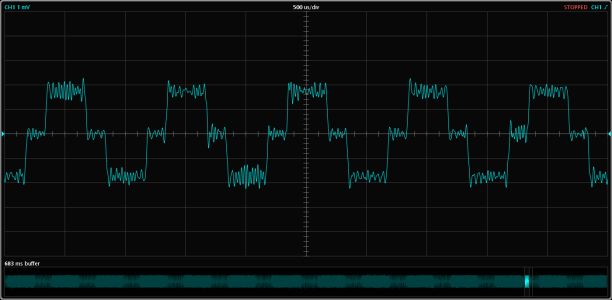
The same but 24 bit:
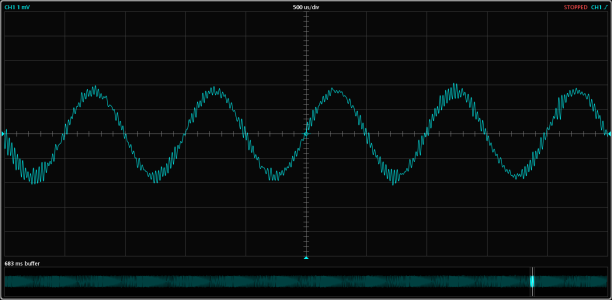
Even the LPF doesn't let reach the Pro Plus level, although without it results are much worse.
The same signals but for the Pro Plus:
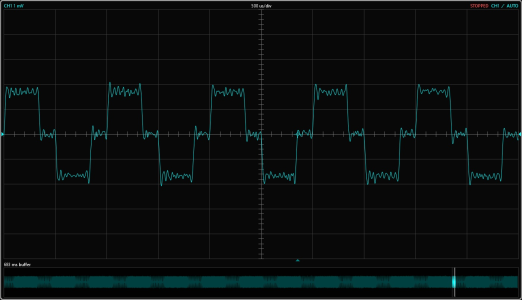
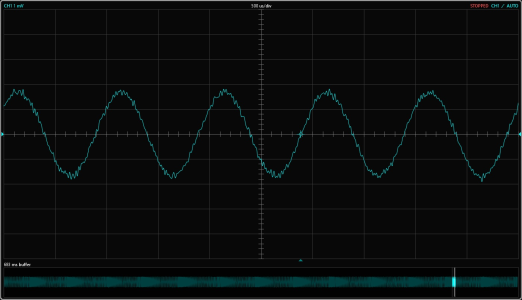
Intersample peaks are handled well, no LPF this time.
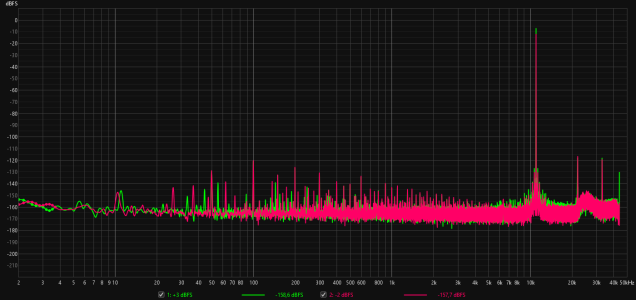
Even peaks at +3 dBFS do not result in clipping, there is enough analog headroom to handle it.
The latest firmware promises jitter improvements. And it improved indeed (j-test for the previous FW can be seen somewhere above in this post):
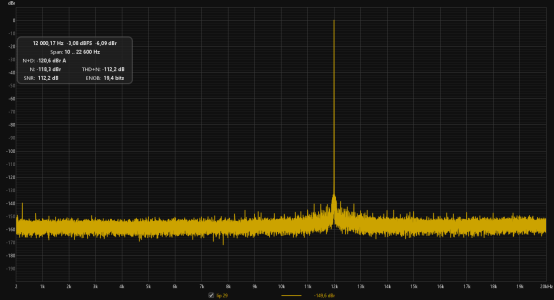
A progress is visible also for 1 kHz test tone (graph with the previous FW was shown for the sinad measurement somewhere above):
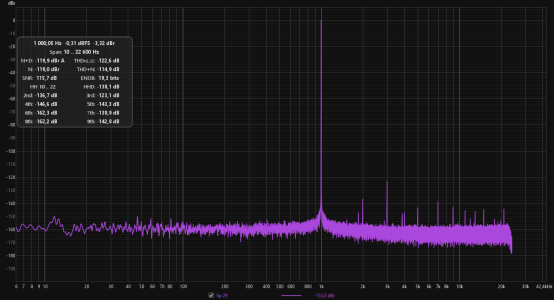
Well done @WiiM Team @WiiM Support .
Let's talk about the jitter over digital outputs. I will use the Holo Audio Spring 3 DAC which is a true NOS DAC and has an unique ability to turn off its PLL. This way I can compare a raw performance of the outputs in j-test.
Toslink:

Coax:
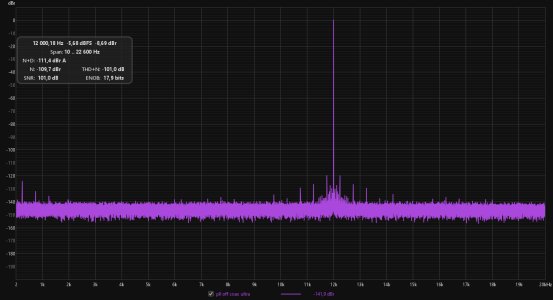
Toslink is slightly better in case of the Ultra when the presence of periodic jitter is considered.
And USB output which is unfair for the comparison of course, because it's clocked by the DAC:
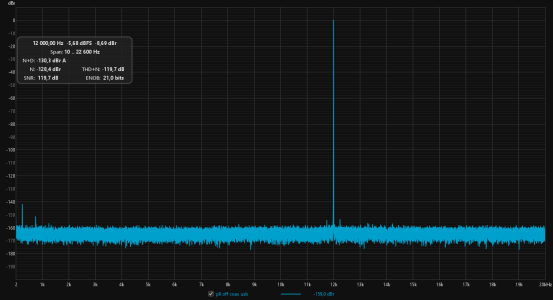
Spring 3 has incredibly low jitter.
All 3 graphs on the same screen:
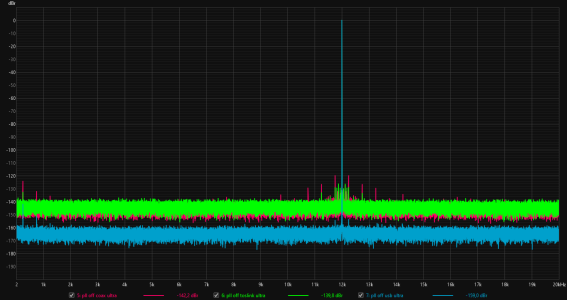
Let's look how the jitter suppression works. A coax output but the PLL is on:
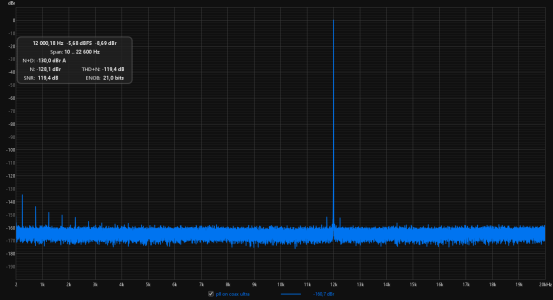
The jitter suppression of Spring 3 is extremely good, as far as I know it's one of the best available on the market.
Time for a "torture" test. I will use 192 kHz j-test signal to verify if cables matter. The Holo Audio Spring 3 in action again, PLL is off.
Mogami 2964:
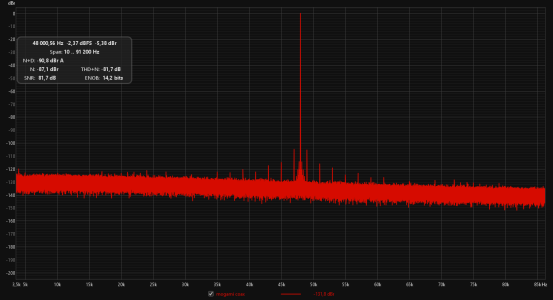
Hosa BNC WordClock cable:
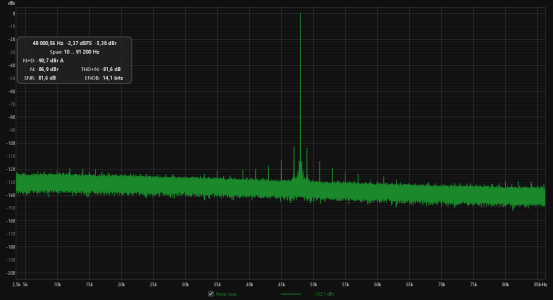
No serious difference for these coax cables. Time for optical ones.
A random one I used for jitter tests already, but I found out it's labelled as "Bandridge":
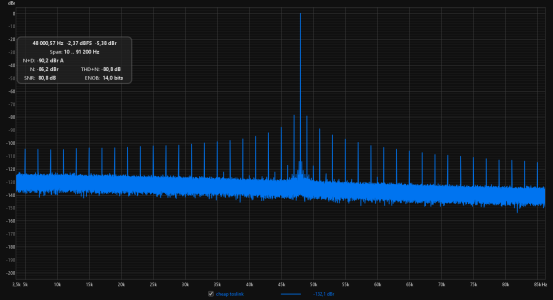
WiiM cable delivered with the Ultra:

Hosa OPM-303:
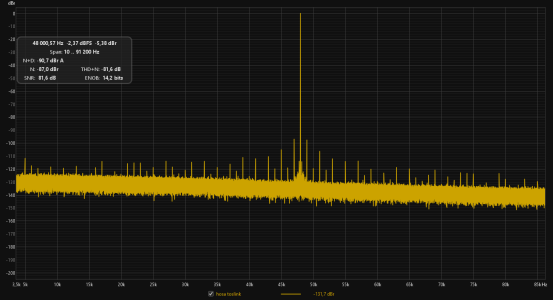
Well, time to change my own opinion, toslink cable matters Pity that my favorite WiiM cable is not of the best quality
Pity that my favorite WiiM cable is not of the best quality 
Of course the final result depends on the DAC and its ability to suppress the jitter.
WiiM cable but PLL is on:

And Mogami coax, PLL is on:
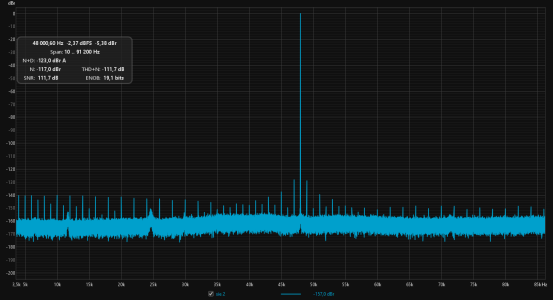
Results are very close when PLL is turned on.
Quick measurements related to analog inputs - ADC performance. Noise profiles first, inputs shorted. Everything sampled at 96 kHz.
Line-in:

Phono, MM:
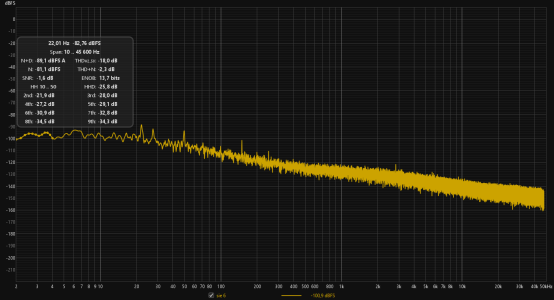
Phono, MC:
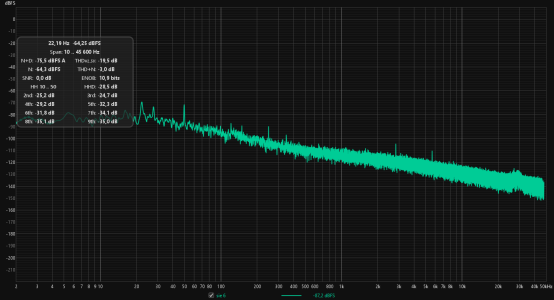
And THD/sinad graphs vs the level in Vrms. The Pro Plus worked as the signal source, at 2 Vrms level for the line-in and at 200 mVrms for the phono.
Line-in:
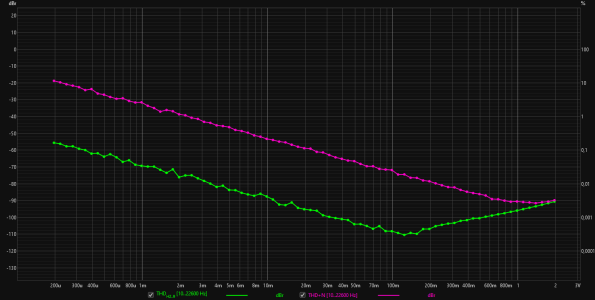
Quite similar to the Pro Plus performance.
Phono, MM:

Phono, MC:
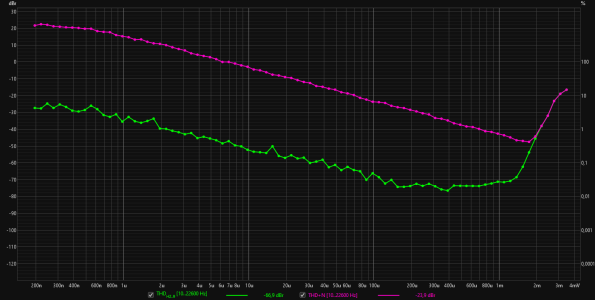
And frequency responses for phono inputs.
Phono, MM:
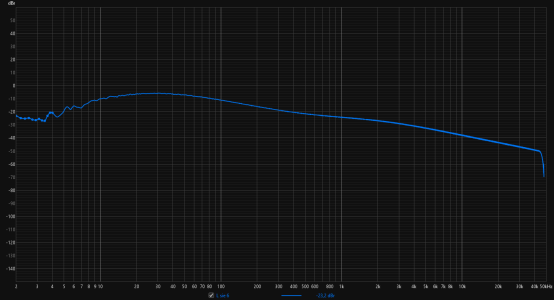
Phono, MC:
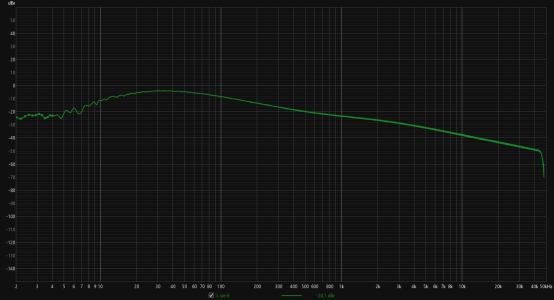
Time for the headphones output. I'm lazy so only 32 ohm load was tested. And a remark - the line-out voltage level affects also the headphones output so all tests were made with the line-out voltage set at 2Vrms. Max output level was 2.22 Vrms.
The output impedance is probably 40 ohm, so it's really high and not exactly best suited for low impedance cans. I will probably repeat my measurements in the future but using 300 ohm load.
An idle noise graph first.
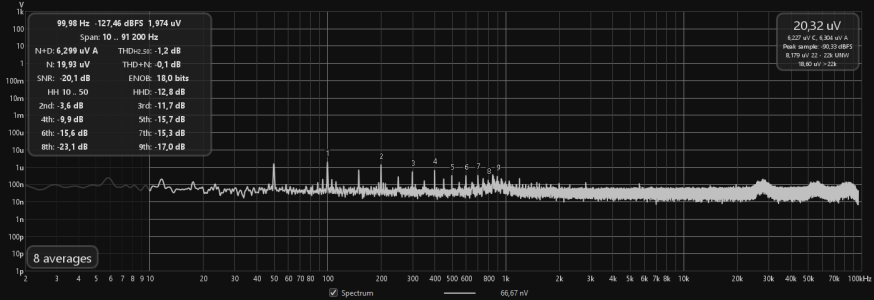
This output seems to be also affected by the PSU noise.
Sinad test, first without the LPF:
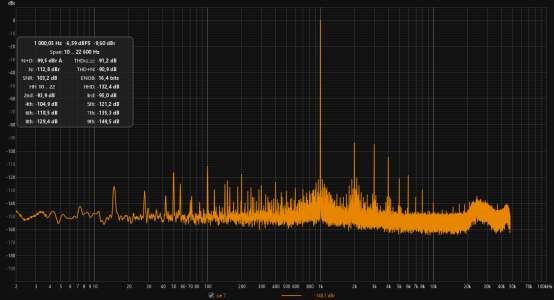
and the same, but with the LPF:
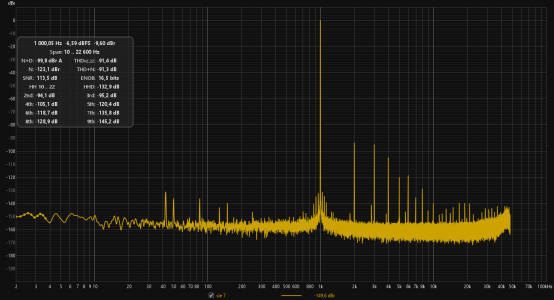
The result is affected mostly by harmonic distortions, but the noise level is visibly elevated when the LPF is not used.
I will use the LPF for following tests.
I just reached the limit of attachments allowed, so I will continue in the comments.
A quick view on the sub out:
And that's all, I guess.
After few listening sessions I think I could fall in love with the Ultra although these PSU noise spikes irritate me a lot.
Just one thing at the beginning, a comparison of the waveforms over the digital coax output, tested with the oscilloscope and 192 kHz sample rate test signal, and terminated at 75 ohms.
This is for the Ultra:

And this is for the Pro/Plus:

Ideal and perfect waveforms would show rectangles. In the real world it should be as close as possible to the ideal one. The Ultra is a clear winner here.
A rough comparison of the Pro Plus with the Ultra, THD vs frequency, 192 kHz sample rate. It's not a THD+N, so it's not a sinad. And this is over the analog output using full scale sine signals.

The "hills" here would require some explanation, but I'll spend some time on that a little later with my personal perspective on other measurements results which I've faced.
Few words on the noise on the analog output. I use 192 kHz sample rate and a dithered silence file to keep the output active.
First result is taken when the Ultra is connected directly to my ADC, screen is off:

and with the screen on:

10 kHz component (and harmonics) appear.
Now the same test but also with the scaler, so that's the setup I use most of the time, screen off:

and the screen on:

One of the differences between above setups is the input impedance, 1.2 kOhm vs 100 kOhm. I've made some additional tests with RME UCX II and 5 kOhm and 9 kOhm impedances, and observed results lied between these above, being closer to the ADC alone with its low input impedance. I guess that the noise pollution from the PSU is strong enough to reveal itself when high impedance input is used. And it can affect measurement results.
Personally I prefer to see something as below, the Pro Plus powered by an LPS and with the scaler, so high impedance input is used:

As I am still suspicious, I made another test with the LPF (which I use for class D amps measurements) attached. The scaler is used again:

Noise pollution is highly attenuated, so maybe it comes from the high frequency noise made by the PSU. I looked at the spectrum of white noise to verify how the DAC filter (there are 7 of them BTW) handles is. Below a comparison with the Pro Plus:

It doesn't look good to me.
And something for those sinad addicted, with an LPF:

and without it:

Noise level is 5 dB higher without the LPF so sinad is worse by 5 dB as well. Jitter artifacts are visible around the fundamental on both graphs.
For all the following tests I will use the LPF, unless stated otherwise.
The Dynamic Range, 120.1 dB.

THD vs level, for 1 kHz test tone:

IMD vs level, for SMPTE test tone:

A small sign of ESS hump is visible. I said in the comments, based on quick tests, that it wasn't visible with the LPF, but I was wrong.
J-test for the analog output. I've no idea why some people take such results as jitter measurements of the digital outputs...

NID multitone:

Time for something I would call a noise profile, over the coaxial output. I use both ADC Cosmos and the Scaler plus the LPF, with a termination at 75 ohm just before the LPF. Due to the LPF characteristics I limit the recording sample rate to 96 kHz. As a test signal I use dithered "silence" file.
First result comes from SMSL PO100 Pro, powered by the USB hub:

Next one is the WiiM Pro, powered by Sbooster LPS:

And the last one is the Ultra, powered by its internal SMPS:

The Ultra is a clear winner with its 583 uVrms noise level, but PSU spikes reveal the strongest presence. Noise of the WiiM Pro - 2.288 mVrms - is much higher although the linear power supply is used.
Low-level -90.31 dB signals look worse then for the Pro Plus.
Undithered, 16 bit:

The same but 24 bit:

Even the LPF doesn't let reach the Pro Plus level, although without it results are much worse.
The same signals but for the Pro Plus:


Intersample peaks are handled well, no LPF this time.

Even peaks at +3 dBFS do not result in clipping, there is enough analog headroom to handle it.
The latest firmware promises jitter improvements. And it improved indeed (j-test for the previous FW can be seen somewhere above in this post):

A progress is visible also for 1 kHz test tone (graph with the previous FW was shown for the sinad measurement somewhere above):

Well done @WiiM Team @WiiM Support .
Let's talk about the jitter over digital outputs. I will use the Holo Audio Spring 3 DAC which is a true NOS DAC and has an unique ability to turn off its PLL. This way I can compare a raw performance of the outputs in j-test.
Toslink:

Coax:

Toslink is slightly better in case of the Ultra when the presence of periodic jitter is considered.
And USB output which is unfair for the comparison of course, because it's clocked by the DAC:

Spring 3 has incredibly low jitter.
All 3 graphs on the same screen:

Let's look how the jitter suppression works. A coax output but the PLL is on:

The jitter suppression of Spring 3 is extremely good, as far as I know it's one of the best available on the market.
Time for a "torture" test. I will use 192 kHz j-test signal to verify if cables matter. The Holo Audio Spring 3 in action again, PLL is off.
Mogami 2964:

Hosa BNC WordClock cable:

No serious difference for these coax cables. Time for optical ones.
A random one I used for jitter tests already, but I found out it's labelled as "Bandridge":

WiiM cable delivered with the Ultra:

Hosa OPM-303:

Well, time to change my own opinion, toslink cable matters
Of course the final result depends on the DAC and its ability to suppress the jitter.
WiiM cable but PLL is on:

And Mogami coax, PLL is on:

Results are very close when PLL is turned on.
Quick measurements related to analog inputs - ADC performance. Noise profiles first, inputs shorted. Everything sampled at 96 kHz.
Line-in:

Phono, MM:

Phono, MC:

And THD/sinad graphs vs the level in Vrms. The Pro Plus worked as the signal source, at 2 Vrms level for the line-in and at 200 mVrms for the phono.
Line-in:

Quite similar to the Pro Plus performance.
Phono, MM:

Phono, MC:

And frequency responses for phono inputs.
Phono, MM:

Phono, MC:

Time for the headphones output. I'm lazy so only 32 ohm load was tested. And a remark - the line-out voltage level affects also the headphones output so all tests were made with the line-out voltage set at 2Vrms. Max output level was 2.22 Vrms.
The output impedance is probably 40 ohm, so it's really high and not exactly best suited for low impedance cans. I will probably repeat my measurements in the future but using 300 ohm load.
An idle noise graph first.

This output seems to be also affected by the PSU noise.
Sinad test, first without the LPF:

and the same, but with the LPF:

The result is affected mostly by harmonic distortions, but the noise level is visibly elevated when the LPF is not used.
I will use the LPF for following tests.
I just reached the limit of attachments allowed, so I will continue in the comments.
A quick view on the sub out:
And that's all, I guess.
After few listening sessions I think I could fall in love with the Ultra although these PSU noise spikes irritate me a lot.
Last edited:

